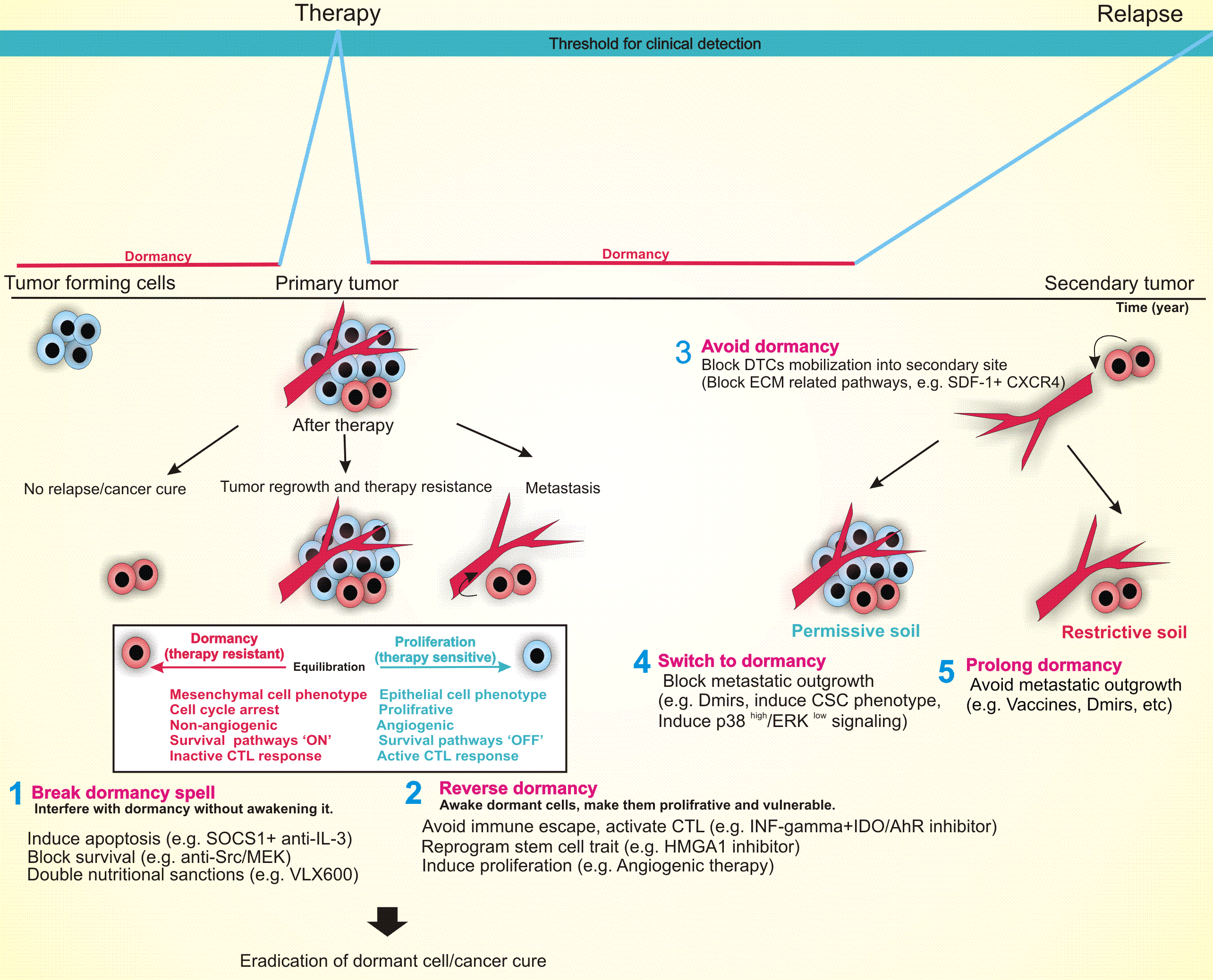Preprint
Review
Tumor Cell Dormancy: Threat or Opportunity in the Fight Against Cancer
Altmetrics
Downloads
437
Views
411
Comments
0
This version is not peer-reviewed
Submitted:
11 October 2018
Posted:
11 October 2018
You are already at the latest version
Alerts
Abstract
Tumor dormancy, a clinically undetectable state of cancer, makes a major contribution to the development of multidrug resistance (MDR), minimum residual disease (MRD), tumor outgrowth, cancer relapse, and metastasis. Despite its high incidence, the whole picture of dormancy-regulated molecular programs is far from clear. That is, it is unknown when and which dormant cells will resume proliferation causing late relapse, and which will remain asymptomatic and harmless to their hosts. Thus, identification of dormancy-related culprits and understanding their roles can help predict cancer prognosis and may increase the probability of a timely therapeutic intervention for the desired outcome. Here, we provide a comprehensive review of the dormancy-dictated molecular mechanisms, including an angiogenic switch, immune escape, cancer stem cells, extra cellular matrix (ECM) remodeling, metabolic reprogramming, miRNAs, epigenetic modifications, and stress-induced-p38 signaling pathways. Further, we analyze the possibility of leveraging these dormancy-related molecular cues to outmaneuver cancer, and discuss the implications of such approaches in cancer treatment.

Keywords:
Subject: Medicine and Pharmacology - Oncology and Oncogenics
Copyright: This open access article is published under a Creative Commons CC BY 4.0 license, which permit the free download, distribution, and reuse, provided that the author and preprint are cited in any reuse.
MDPI Initiatives
Important Links
© 2024 MDPI (Basel, Switzerland) unless otherwise stated





